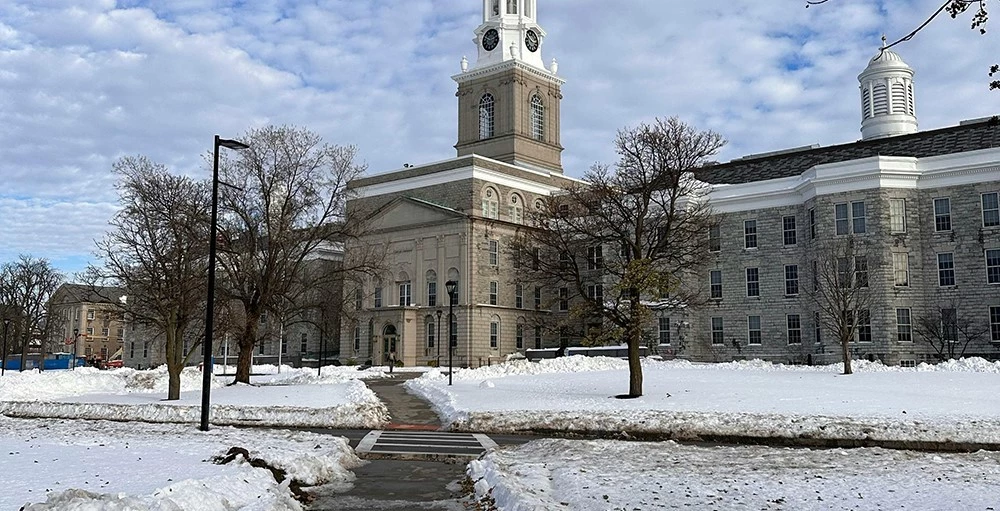The last two decades have brought higher college tuition. For the 1999-2000 school year, the average public four-year tuition was $3,329. Twenty years later, that tuition has jumped to $9,349 – a 179.2% increase1.
College students struggling to pay for their education also face external costs including housing, transportation, books, and more.
Unfortunately, for non-traditional students – those working on their degree while working or raising a family – the external costs are even higher.
A Georgetown Center on Poverty and Inequality report2 shows that non-traditional students not only have to contend with tuition costs but an average of $30,900 per year on additional costs not associated with tuition.
Real Costs of College
The report suggests that although tuition costs are rising, that is only one component of the financial issues that surround college affordability.
The others include living costs, and for older students that means more than housing, food, and transportation. It often includes dependent care, healthcare, and more.
These external costs for non-traditional students are almost three times more than the public four-year tuition and eight times more than the public two-year tuition.
The biggest expense is housing, with an average yearly cost of $12,400. Because of this steep cost, older students experience homelessness three times more often than their younger classmates.
Food insecurity and childcare costs are also higher for non-traditional students, who disproportionately represent minority populations.
When considering how to address financial issues faced by their student population, colleges and universities need to be certain to support their non-traditional students.
This segment of students may have dropped out of college earlier in life or delayed college entrance due to financial concerns. Helping them succeed is good for the student, the school, and the competitiveness of the US labor market.
Keep reading: How to Calculate the ROI for a Student Financial Literacy Program
Here are three things that can help non-traditional students bear the financial burden of educational advancement.
#1 - Expand Work-Study Opportunities
Federal Work-Study (FWS) opportunities allow students with financial needs to earn money while in school. These jobs are often on campus and may be related to a student’s course of study.
According to the Georgetown study, FWS has been shown to:
- Reduce hours spent getting to and from an off-campus job
- Increase engagement with the campus
- Make dependent care logistics easier
- Increase students’ access to other public benefits that rely on work reporting requirements such as SNAP, Earned Income Tax Credit, and Child Tax Credit.
By expanding FWS opportunities, non-traditional students would be able to reduce their debt while increasing external help for non-tuition expenses like food and daycare.
#2 - Increase Non-Tuition Assistance
Institutes of higher learning also need to consider financial aid that addresses the non-tuition needs of older students. This can be accomplished in a number of ways, including:
- Providing emergency aid grants for unexpected expenses such as medical bills or car repairs.
- Informing students about additional resources they may be eligible to receive. These include such programs as SNAP, WIC, Medicaid, and SNAP Employment and Training that can pay for some non-tuition expenses beyond food.
- Providing access to public services on campus and during times that align with student schedules to keep school, work, caregiving, and transportation issues from forming a barrier to receiving needed services.
When colleges and universities understand the non-tuition needs of older students and offer assistance in applying for additional aid, these students are less likely to drop out of school due to financial concerns.
#3 - Offer a Financial Wellness Program
Finally, offering a student financial wellness program can help non-traditional students become more aware of financial matters and determine how to handle money responsibly.
According to the Standard and Poor’s Global Financial Literacy Survey3, the U.S. adult financial literacy level is just at 57%, with it lower among low-income families.
Low financial literacy often leads to high financial stress.
Keep reading: How 4 Different Universities Are Approaching Financial Wellness
According to the Healthy Minds Survey, seventy-three percent of US college students report that their current financial situation is stressful, often stressful, or always stressful4.
Providing a holistic financial wellness program can help by providing students with the education, tools, and tips needed to make changes and create strong financial habits.
Students with strong financial literacy are less likely to:
- Drop out
- Default on their student loans
- Feel financially stressed
By focusing on the financial needs and financial wellness of non-traditional students, colleges and universities can help these students find success.
1 - https://educationdata.org/average-cost-of-college-by-year
2 - https://www.georgetownpoverty.org/wp-content/uploads/2021/04/ObstaclesOpportunity-Apr2021.pdf
3 - https://gflec.org/initiatives/sp-global-finlit-survey/
4 - https://healthymindsnetwork.org/wp-content/uploads/2019/09/HMS_national-2018-19.pdf








